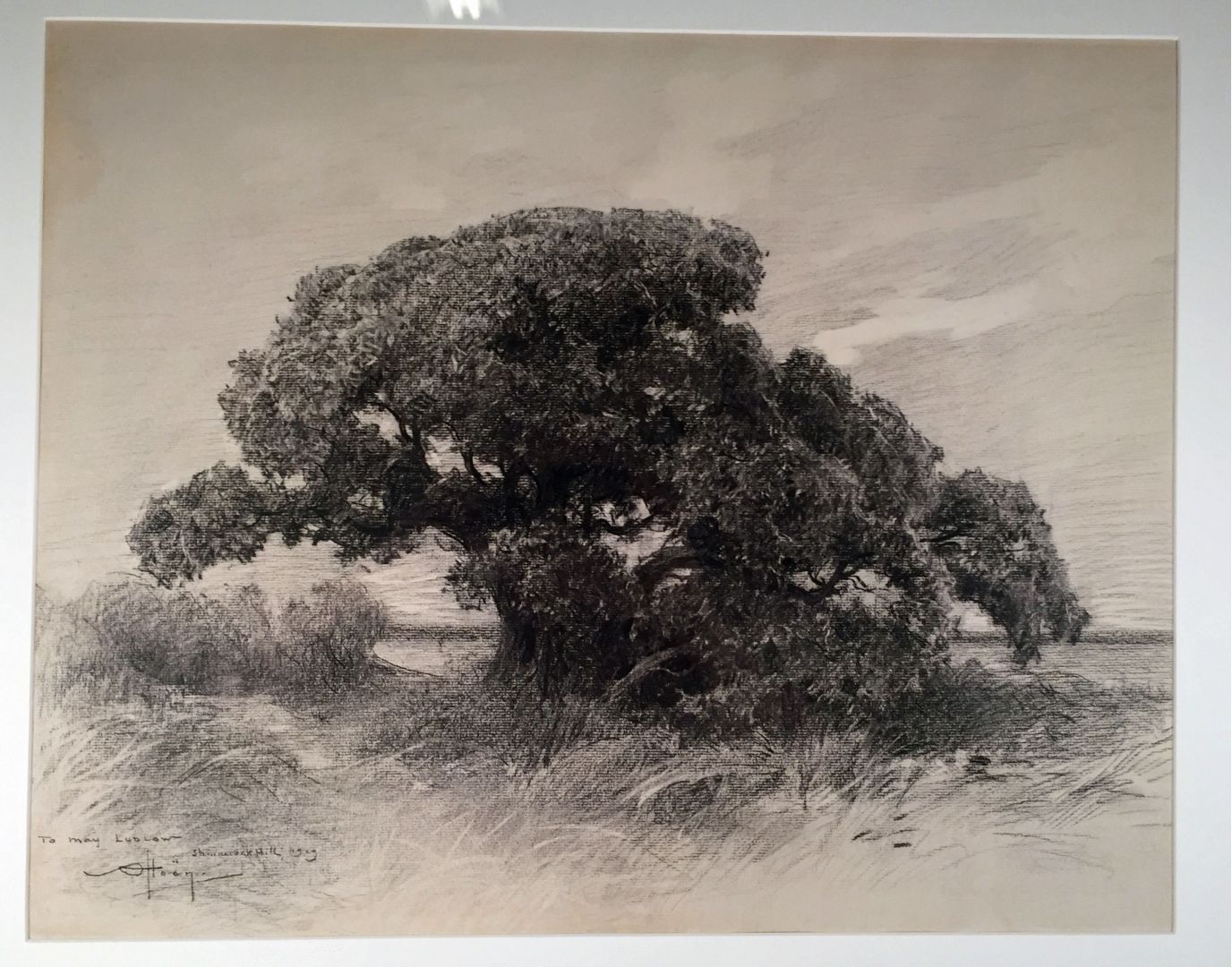Hoen, Alfred-Georges. SHINNECOCK HILLS. Charcoal on laid paper, watermarked "Strathmore Charcoal," 1919. Inscribed "To May Ludlow," and titled, signed and dated in charcoal within the matrix. 18 x 24 inches, framed 28 x 36 inches.In excellent condition. Alfred Georges Hoen, French, 1869-1954, first studied stained glass making. In 1890 he went to Paris to study at the School of Decorative and Fine Arts, as a pupil of Jean-Leon Gerome. He exhibited at the Salon des Artistes Francais, where he became a member in 1910. From 1918 until 1940 he traveled regularly to the US, where he worked and exhibited. He is noted as a portraitist, landscape and marine painter, and for his scenes of the two World Wars. William Merritt Chase established an art school at Shinnecock Hills on Eastern Long Island in 1891. The Shinnecock Hills Summer School of Art was the first important summer art school in America devoted to plein air painting. Mrs. William S. Hoyt first proposed the idea to William Merritt Chase in 1890. Mrs. Hoyt was a wealthy amatuer painter who summered in Shinnecock. Following her suggestion, Chase founded the school in 1891 with financial support from Samuel L. Parrish and Mrs. Henry Kirke Porter. The 1891 offering prospectus praised its location between the ocean and the bay: "An inlet from Shinnecock Bay extends to within a quarter of a mile of the Art Village. Here the boats are kept. One can row or sail down to the sand dunes, a narrow strip of land, separating the bay from the ocean. There is a great variety of interesting subjects to paint, moorland, meadows, farmhouses, oceans and woods." Noted painter William Merritt Chase served as head instructor and his venture quickly established eastern Long Island as a site of major artistic importance. The idyllic scenes that Chase painted during his summers at Shinnecock became synonymous with Gilded Age America (from the Website of the Parrish Art Museum, Southhampton, NY).
Follow us
Contact Us
ed@edpollackfinearts.com
Copyright © 2025 - Edward T. Pollack Fine Arts





